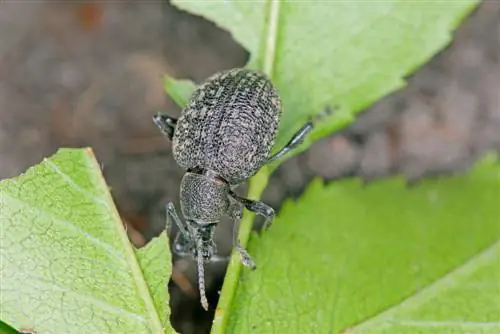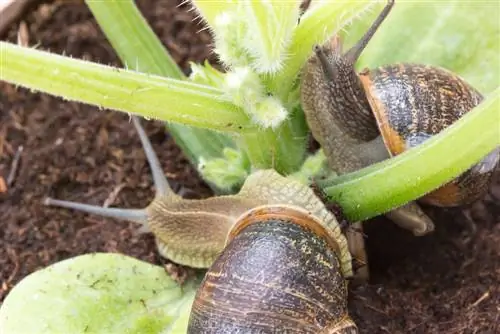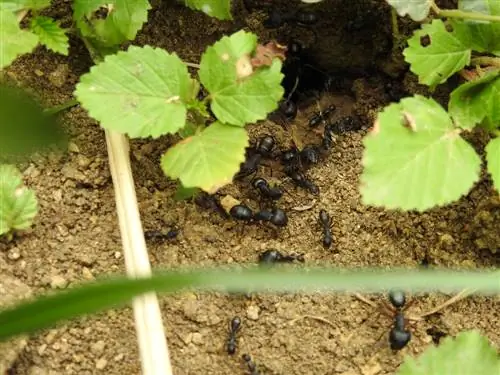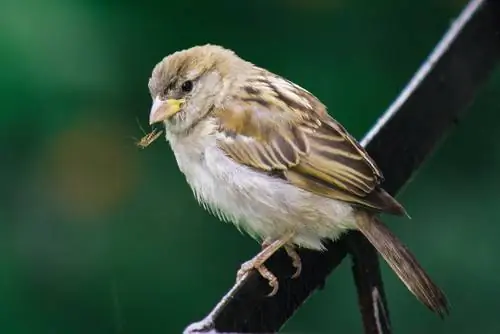- Author admin [email protected].
- Public 2023-12-16 16:46.
- Last modified 2025-01-23 11:22.
The insect world is diverse. Unfortunately, there are some beetles that make life difficult for hobby gardeners. They eat up the vegetables in the garden or contaminate the supplies in the house. Once they are there, the person affected needs patience.
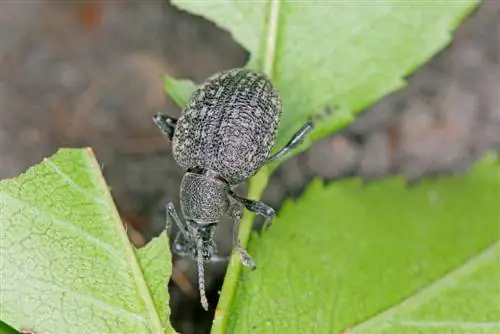
What beetle pests are there and how can you combat them?
Some common beetle pests include the bread beetle, the bacon beetle, the Colorado potato beetle, the black weevil and the reportable Japanese beetle. Preventing and controlling these pests includes precautionary measures such as storing food in tightly sealed containers, regular ventilation, sealing cracks and the use of plant manure, neem press cake or nematodes.
Pests in the house
Many beetles in the home are material and storage pests. To prevent an infestation of such insect pests, you should store dry products such as flour, pasta and oatmeal in tightly sealable glass containers. Larvae can be killed with heat treatment at 60 degrees in the oven or by exposure to cold for several days in the freezer. Ventilate regularly, because beetles don't like drafts. All cracks must be sealed as they offer ideal hiding places.
bread beetle
Their larvae target starchy foods and feast on cookies and rusks. They can eat through paper and plastic packaging. Chocolate, books and pictures also show signs of being eaten in the event of a massive infestation. Since the bookworm does not pose a he alth risk, infected foods are generally edible.
Speck Beetle
In nature, these animals feed on animal remains such as carrion. If they get into the home, their offspring develop into pantry and hygiene pests. The bacon beetle larva's diet includes biological waste, bird feathers, grain products and textiles. If the food is riddled with excrement, gastrointestinal problems may occur after consumption.
Pests in the garden
Beetles in the garden can be beneficial or harmful. While beneficial insects control populations of pest insects, some voracious beetle species affect crops and ornamentals. To prevent pest infestation, you should strengthen the plants with plant manure.
Potato beetle
Both adult beetles and their offspring feed on leaf tissue. In the event of a severe infestation, the voracious insect pests only leave the skeleton of the plant standing. They can destroy entire stocks within a short period of time. The animals prefer nightshade plants such as potatoes, peppers and tomatoes. Dry and warm conditions promote spread.
This helps against Colorado potato beetles:
- pour one kilogram of fresh horseradish with ten liters of water
- Place the container in a sunny place and let it steep for a week
- spray infected plants with the manure
Bigmouth Weevil
This weevil leaves traces of feeding on the leaves of ornamental plants. While the plants cope well with leaf loss, the beetle larvae make life difficult for them. They live in the substrate and feed on plant tissue in the root area. This disrupts the water and nutrient supply, causing the plants to gradually die. Nematodes of the genus Heterorhabditis are an effective control agent that is used between April and May or August to September.
Tip
Neem press cakes, which you bury in the substrate around the plants, have a deterrent effect on the beetle brood.
Reportable: Japanese beetle
Due to its low distribution in Germany, the Japanese beetle is often confused with native insects such as the garden leaf beetle. The Japanese beetle comes from Japan and is introduced to us through imports. His menu includes around 300 different plants, including fruit trees, vegetables and vines. Sightings have only occurred four times in Germany since the early 2000s.
Specialidentifying features of the Japanese beetle are:
- two white tufts of hair on the abdomen, five white tufts of hair on each side
- Wings have a copper tone, head is greenish glow
- Size between 8 and 12 mm
If you are sure that you have discovered a Japanese beetle, you must report it to the registration office in your respective federal state.

